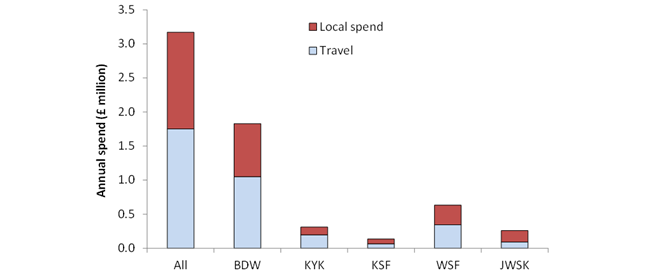3.5.1 Revealed preference: Travel costs method

In the Travel Cost Method, which is an example of a revealed preference technique, values are calculated based on information about how people actually behave. In the case of the Travel Cost Method, the value to a respondent of a particular location is based on the amount they are prepared to spend on travel to get there.
- Type of measured value: Recreational use value.
For more information see:
In French:Terra, S., Guide des bonnes pratiques pour la mise en oeuvre de la méthode des couts transports, Directions des études éconmiques et de l'évaluation environmentale, Minisètre de l'Ecologie et du Développement Durable. ![]()
In English: www.ecosystemvaluation.org/travel_costs.htm

Example
A key aim of the Poole Harbour case study was to provide a monetary value for selected recreational activities, as monetary values can be used to demonstrate the potential economic implications of management actions and so can support decision-making.
The value of the recreational activities in Poole Harbour ![]() was determined primarily by considering the distance travelled (as calculated based on their home post code) and the mode of transport used by each respondent, with factors such as whether they travelled to multiple destinations or had multiple purposes for their visit also taken into account.
was determined primarily by considering the distance travelled (as calculated based on their home post code) and the mode of transport used by each respondent, with factors such as whether they travelled to multiple destinations or had multiple purposes for their visit also taken into account.
In addition to the cost of their travel, respondents were also asked about additional costs they incurred during their trip, to provide information about their local spending on items such as food, accommodation, car parking, permits, slipway use, tuition and equipment.
Count data was also collected to determine the number of participants undertaking each activity. This was combined with the information on spend per person to determine the total annual spending by participants in each activity.

Figure: The annual spend per year (£millions) for all activities combined and for the individual pursuits: birdwatching (BDW), kayak/canoing (KYK), kitesurfing (KSF),windsurfing (WSF) and jet/waterskiing (JWSK)


